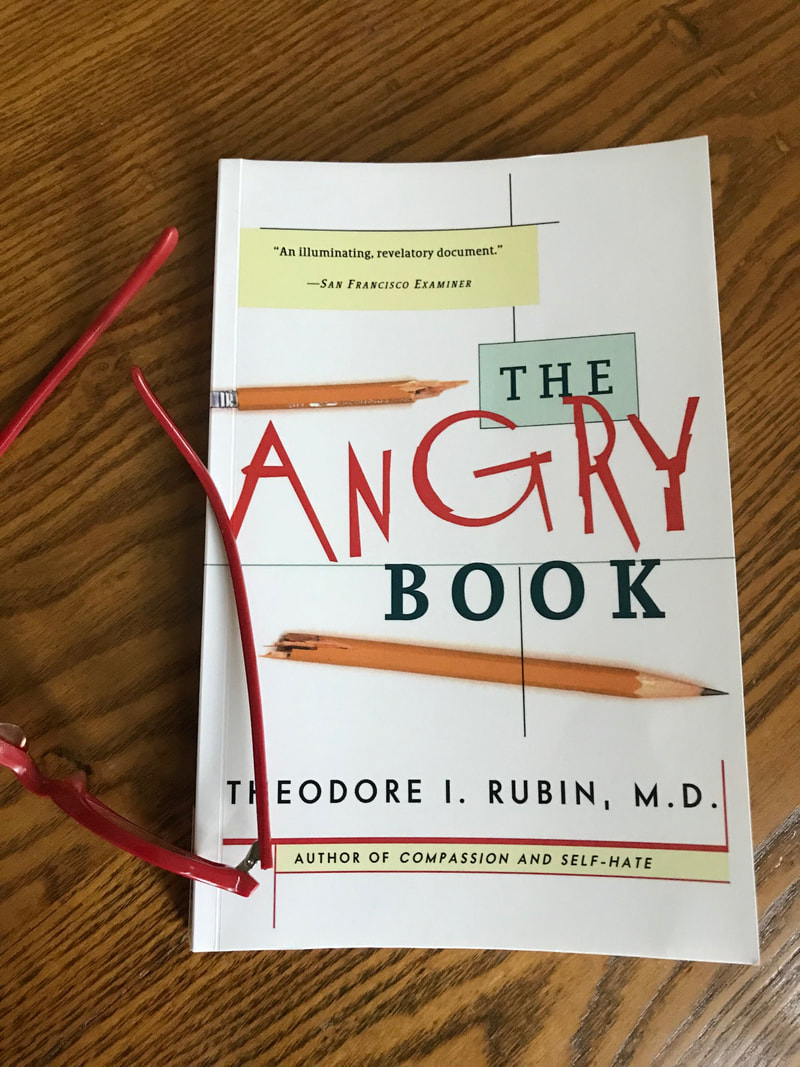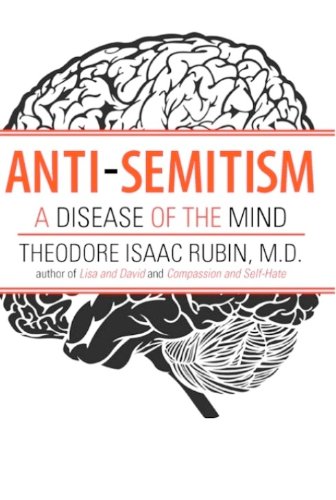Archived Blogs
|
Everyone knows Fred Rogers (aka Mister Rogers). But after reading about his background and accomplishments, I wanted to know…how did he become the man he was? And then I found a copy of one of his letters listing ten books that influenced him. Here’s the list.
So I’ve been checking them out and now I’m on number #6. You can read my first blog here. The Angry Book has been the most difficult book so far and it made me, well….angry. I didn’t agree with everything the book said. The premise of the book is that behind virtually every problem you can experience—drinking too much, depression, frequent injuries, not sleeping, feeling guilty, anxiety—is the fact that you are harboring anger and not releasing it in a healthy fashion. First, I was confused, having been told (and believed) that behind a lot of anger is depression, insecurity or fear. The author, Theodore Rubin MD, was saying just the reverse. I was frustrated… and I was only a third into the book. I’d just finished a section of the book called ‘Self-Sabotage’ which dealt with the issue of self-hate. One section, in particular, made me roll my eyes: A very blatant form of self-hate is accident proneness. Its victims are somehow involved in accident after accident with no awareness of their purposeful involvement. I put the book down in disgust, turned on the tv… and started watching a PBS program about Margaret Mitchell— the author of Gone with the Wind. The biography started with her childhood and from the beginning we’re told that Margaret’s mother was not as affectionate as Margaret would have liked. In fact, you get the sense that there was a serious disconnect between Margaret and her mother. Later we’re told that during her childhood, Margaret suffered an ankle injury. After that, she had a ‘series’ of ankle injuries, usually followed by a bout of depression. Holy cow. Is this what he was talking about? Margaret’s mother died of influenza (get those flu shots!) during her daughter’s freshman year in college and Margaret didn’t make it home in time to say goodbye. Her mother did leave a note behind, but it wasn’t what you’d imagine with lots of declarations of love for her daughter. It was, more accurately, a list of instructions for Margaret to follow. Definitely unresolved issues for poor Margaret. By this time, I wasn’t surprised that Margaret continued to have ankle problems. When she took a long time to recover from one particular injury, her husband grew tired of bringing her library books to amuse herself. He insisted that she write her own book. You guessed it— Gone with the Wind. Ok, so maybe there is something to this book. But let me give you one excerpt that got my blood pressure up and see if you agree. Dr Rubin describes a young boy that is destroying department store displays. None of the salespeople can get him to stop. A store psychologist (I’ve never heard of this, by the way) whispers a few words in the boy’s ear and… …as if by magic, the storm was over. One of the salesmen eager to participate in obvious wisdom asked the psychologist what he said. He replied, “I simply said stop upsetting the store, you little—or I’ll beat your—off.” His analysis of the situation was : “The boy had been told honestly and straighforwardly, with honest respect, within what limits he could operate.” Could you imagine Fred Rogers saying that to a young, disobedient boy? Me neither. But allow me to play armchair psychologist for a minute. Dr Rubin wrote an earlier book titled Anti-Semitism: A Disease of the Mind. The book seems to claim that all anger against the Jewish race was a form of mental illness… As a child, Ted Rubin could not understand why some people hated him and his family only because they were Jews. and… As a psychiatrist, Dr Rubin learned that Anti-Semitism and other deep seated prejudices are non-organic diseases of the mind: malignant emotional illnesses that can be treated by only first understanding the unique psychodynamics involved. and… Violent "acting out," in the case of anti-Semites, often results from gender confusion, homophobia and an identification with macho toughness, claims Rubin. I think Dr Rubin is the one that’s angry. So what did Fred Rogers get from this book? How could he be inspired by a book that promoted ‘losing your temper’? A blog by Tim Madigan answers that question by relating a quote from Rogers. “There’s no ‘should or ‘should not’ when it comes to having feelings. They’re part of who we are and their origins are beyond our control.” I think it was probably very interesting for Rogers to peek behind someone’s behavior and see the emotions driving it. But did Rogers agree and live by all of Rubin’s principals? The book says that ‘releasing anger can lead to greater health, happiness and emotional wholeness.' I’m sure Rogers believed that part (he recommended playing the piano) but he added an important distinction… “I’ve told the children there are many things you can do with your feelings that don’t hurt yourself or anyone else…” Anger is a risky emotion. Holding it in, diverting it, converting it or preserving it can all lead to terrible problems. But letting it loose on your offender…well, that’s not Mister Roger’s way. PS. Rogers didn’t use profanity when he was upset. Those that knew him stated that when he’d come to his office and see a mountain-sized pile of fan mail, he take one look and say ‘mercy’. That’s it…the strongest word he was ever known to say.
0 Comments
Leave a Reply. |
Archives
October 2020
Categories |
COPYRIGHT 2017 SUSAN BADARACCO | Site Credits




 RSS Feed
RSS Feed